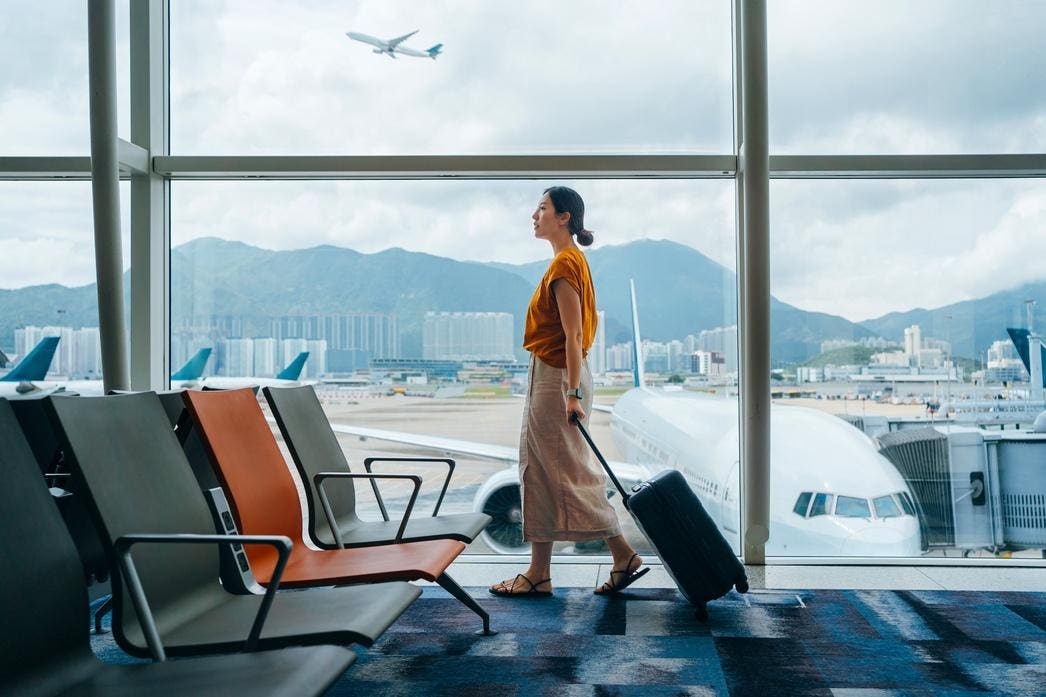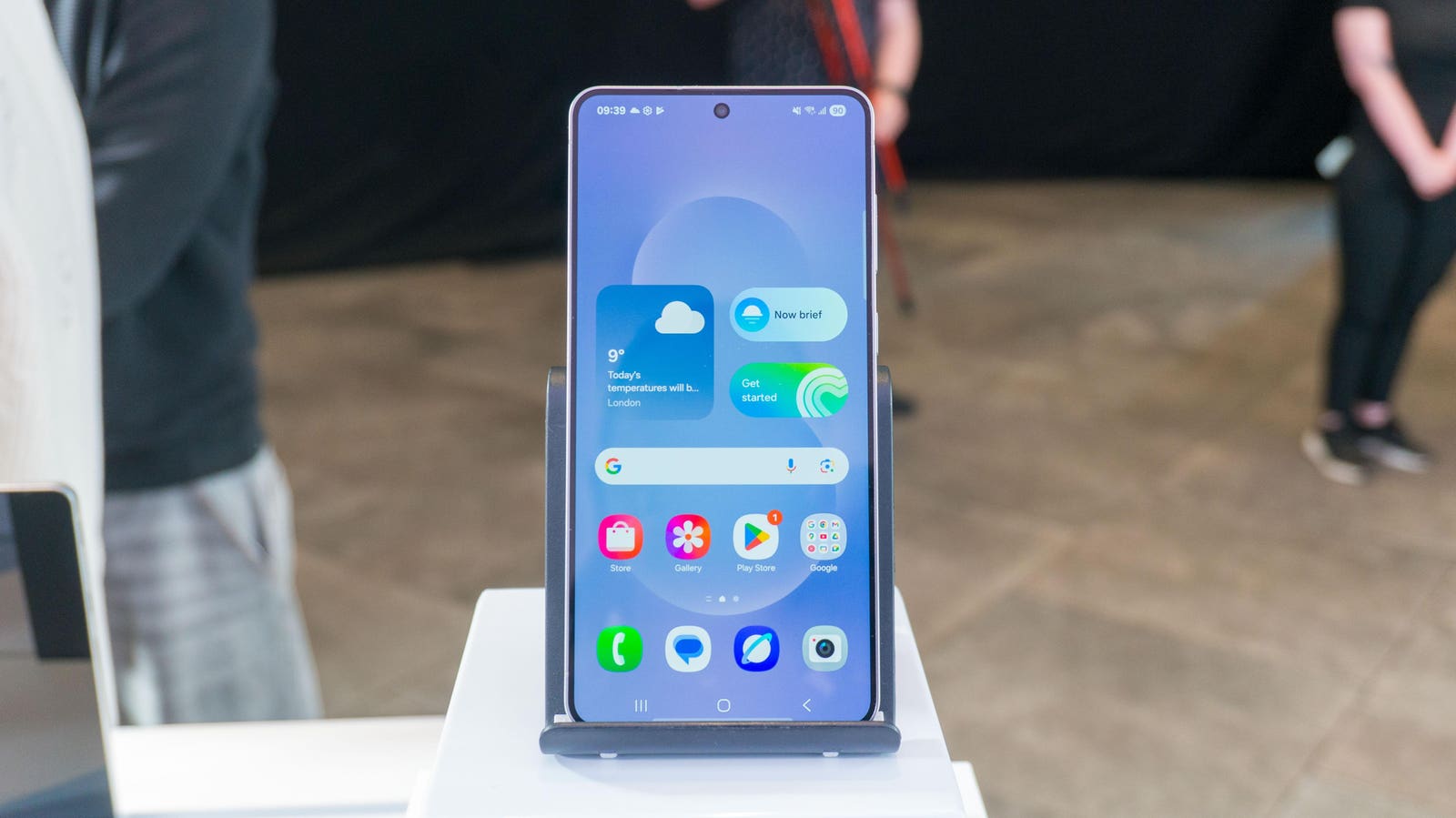San Francisco Market St. before it was closed to cars
Brad Templeton
Starting Aug 26, Waymo robotaxis will be allowed to drive on San Francisco’s main thoroughfare, Market Street, which was closed to private car traffic in 2020. Transit vehicles and bicycles will continue to make heavy use of the street, and Uber and Lyft “black” services will get access at night. Waymos will get access outside of rush-hour. There is also heavy pedestrian traffic on the sidewalks. The ride-hail cars will be able to use 7 designated spots along the street for PuDo (pick-up and drop-off.) This pilot is a remarkably forward looking step for San Francisco, which has earned a different reputation in the past for its battles with the robotaxis. This concept should be expanded to many other locations, and in particular to airports, notably LAX which is about to completely rework its passenger PuDo.
Uber and Lyft have disliked the closure, and protested at Waymo getting access alone, but there are reasons to give special privileges to robotaxis. Unlike human driven vehicles (especially private cars) robotaxis can guarantee they will follow special rules you give them, even highly dynamic rules that change with conditions. That can be assured because they are robots, and also because regulators can talk directly with the companies driving them, and punish them easily if they disobey. Even taxi companies, or Uber and Lyft, can’t fully control their drivers, though they are under more control than ordinary private cars.
While this pilot simply dictates hours, Waymo could, if asked, monitor traffic on the street and simply not route more cars over it than it can handle, assuring it never gets overloaded. They could monitor the PuDo spots and turn off to side streets if they are getting too loaded or causing congestion. They could monitor all transit vehicles (or even get tracking data from the transponders found in most transit vehicles today) to make sure they avoid impeding them.
Cyclists have protested, for example, that in many areas of Market St. the inner lane has a trolley, and cars and bikes pass in the right lane. If a car stops in the right lane because a trolley is stopped (as is required at trolley stops) this blocks both lanes, which is bad news for cyclists. If desired, robotaxis could take steps to control how often that happens. (It’s difficult to totally eliminate without wasting too much capacity, but it can be minimized.) The robotaxis can be programmed to “use the gaps” in traffic, but stop before using all of them. With gaps always left, traffic congestion can be minimized. Human drivers just can’t do this.
On a road like Market St. with lots of transit traffic, robotaxis could be programmed to travel behind the transit vehicles, but never get too near in front, such that the transit has to brake. Humans could also do this (with fines) but not as well. Often transit demands private right-of-way so it can avoid congestion, but then runs on long headways that waste tremendous amounts of capacity. If robotic vehicles can use that capacity but promise never to almost never slow the transit vehicles, it’s a win for all.
The dreaded LAX horseshoe n less congested time. What will become LAX-it lot is upper right.
getty
New Los Angeles logistics
LAX airport has a terrible congestion problem in the “horseshoe” road that loops around all its terminals. As a first step, LAX ordered ride-hail vehicles to pick up passengers only in a special staging lot just outside the main terminal area. Passengers arriving at most terminals must take a shuttle bus to the LAX-it (LA Exit) lot to get their ride-hail or taxi. Arriving passengers may be dropped of at their terminal.
Los Angeles, CA, Monday, July 29, 2024 – Travelers head to pickup rides at the “LAXit” lot. The opening of the “LAXit” ride-hail lot in 2019 caused a frenzy in Los Angeles as travelers tried to navigate a clunky system to order a ride to their final destination that, for many, was too much work after a long flight. Nearly five years later, travelers have continued to struggle.(Robert Gauthier/Los Angeles Times via Getty Images)
Los Angeles Times via Getty Images
Traffic was still bad so LAX has built an automated people mover (APM) at a cost of $3.4 billion. Passengers will have to take a moderate walk through the parking lots to the APM (which has only 3 stations for the 9 terminals) and it can take them to rental cars, LA transit, parking and hotels, and some PuDo areas. The LAX-it lot may continue with shuttles or be moved to near an APM station. (LAX did not respond to inquiries for several days.)
There’s an irony that LAX-it forced the taxis and ride hails passengers, which pay fees to the airport to pick up passengers there, to take a bus to a remote staging lot, while people being dropped off by a friend, who don’t pay, can be picked up directly at the terminal. The reason is simple: The airport can control the fee-payers and it’s hard to control the ordinary cars. With only so much capacity on the roads, it has to do something to control traffic volume, and this was it.
Robotaxis present a special opportunity, wasted so far, to take advantage of their robotic ability to follow rules. Robotaxis could promise reliable and non-blocking PuDo instead of the mess most airport curbs become with double-parked cars fighting for spots, and the fleet operator can control how many cars come in to avoid causing congestion. If there is no capacity, they could automatically divert some passengers to the staging lots at the APM stations, either at random or in exchange for surcharges or discounts. They could tell the passengers about any extra time needed in advance, or know about delayed flights or use a variety of other techniques. Human driven ride hail could do some of this, but not as reliably. Personal cars would have trouble doing it at all.
A vehicle is tested for the Automated People Mover (APM) train system before the opening for the LAX/Metro Transit Center rail and bus public transportation station at Los Angeles International Airport in Los Angeles, California on June 6, 2025. The LAX/Metro Transit Center will connect the LA Metro C and K light rail lines with the LAX Automated People Mover opening in 2026 ahead of the FIFA World Cup and 2028 Olympic and Paralympic Games (Photo by Patrick T. Fallon / AFP) (Photo by PATRICK T. FALLON/AFP via Getty Images)
AFP via Getty Images
Robotaxis could also enforce pooling, spotting groups of passengers all going to the same rough area, and pooling them, then taking them to a staging spot many miles away, where personal robotaxis are waiting to take each passenger the last few miles for the door to door service they were promised. Every robotaxi entering and leaving the airport could be full (if there’s luggage room, which Waymo’s Jaguars might be light on) to make the best use of capacity.
(Waymo’s new Ioniq and Zeekr vehicles would do better pooling passengers with luggage.)
In another irony, robotaxis and ride-hail can do pick-up after drop-off, so that each one carries a passenger group in each direction, while private cars carry one in only one direction. The Waymos are also all-electric.
One could, in fact, imagine an airport where the robotaxis get top priority for curb access, and then ride hails, and finally, at light times, personal cars. The personal cars could use a toll transponder to pay a fee or just to be counted. If there’s capacity for 200 cars, they could request a slot which is cheap or free, but if they drive in without a slot, they might pay a $50 toll, and one less Waymo would come in to keep volume fixed. The end result would be a road that never gets more vehicles than it has capacity to handle, and flows smoothly, a win for all. In fact, they might not have needed to spend those billions on the people mover, since a non-congested road would allow reliable shuttles that almost never see congestion.
Let’s hope the special streets and airports of the futures exploit the great opportunities robocars offer them, rather than being shunted away and feared.








